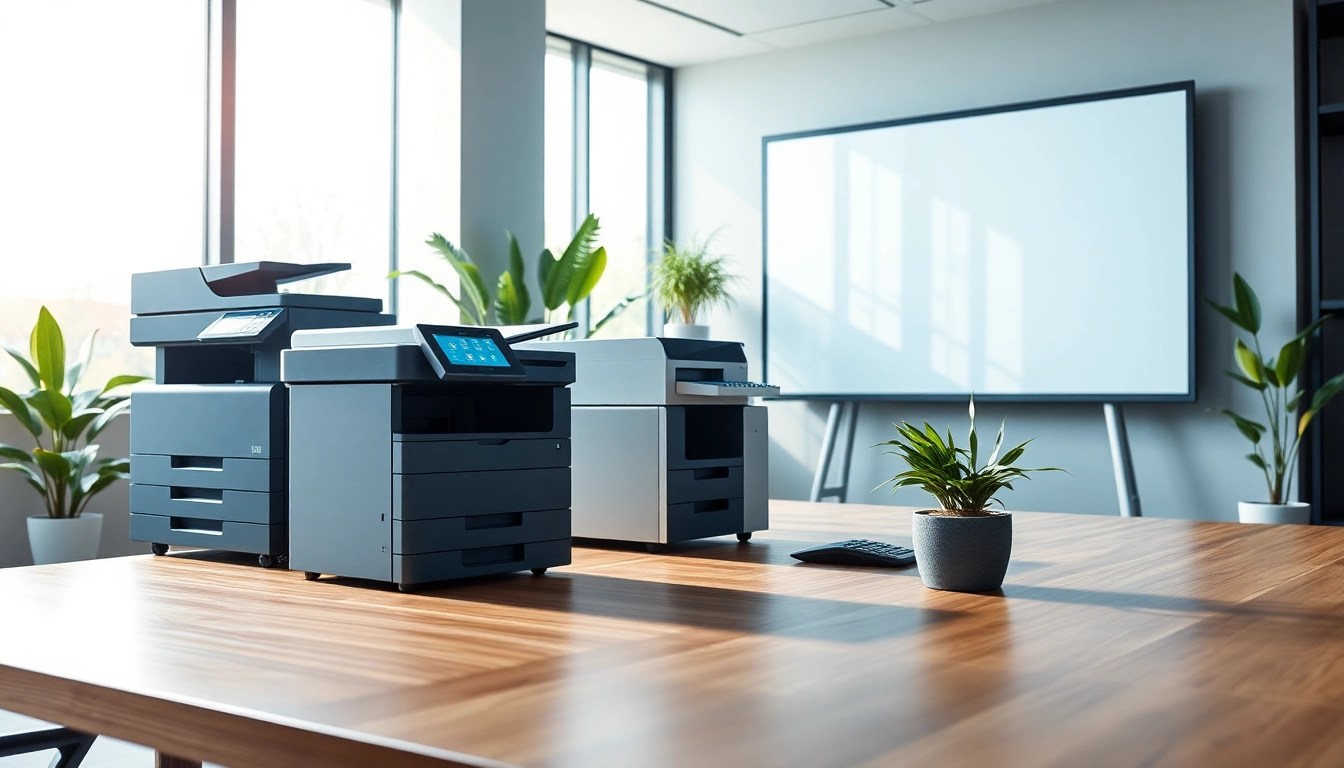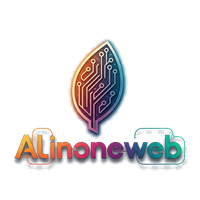Ultimate Guide to Office Machines: Boost Productivity in 2023

Understanding the Essentials of Office Machines
What Are Office Machines?
Office machines encompass a wide range of equipment and tools essential for facilitating daily administrative tasks and operations within a workplace. From printers and copiers to more advanced machinery like multifunction printers and document scanners, these devices play a crucial role in enhancing productivity and efficiency. An integral part of modern workflows, office machines support various functions, including printing, copying, scanning, and faxing, all of which contribute to a well-functioning office environment.
Common Types of Office Machines Used Today
The variety of office machines available today can meet diverse business needs. Here are some common types:
- Printers: Essential for producing hard copies of digital documents, printers come in different types such as inkjet, laser, and multifunction models.
- Copiers: These machines duplicate documents quickly and efficiently, often with options for color or black-and-white copies.
- Scanners: Scanners convert physical documents into digital formats, making it easier to store, share, and edit files.
- Fax Machines: Although less common today due to digital alternatives, fax machines are still used in many businesses for sending documents securely.
- Label Makers: These devices print labels for organizing files and other office supplies, helping maintain an orderly workspace.
- Binding Machines: Used for assembling documents, binding machines add a professional touch to reports and presentations.
Benefits of Investing in Quality Office Machines
Investing in high-quality office machines can lead to significant improvements in productivity and cost savings over time. Here are a few key benefits:
- Increased Efficiency: High-quality machines often operate faster and more reliably, allowing employees to complete tasks without interruption.
- Enhanced Print Quality: Investing in better printers and copiers results in superior document quality, which can enhance corporate image and communication.
- Lower Long-Term Costs: Although quality machines typically come with a higher initial price tag, they often offer lower operating costs due to efficiency and durability.
- Improved Workflow: Modern office machines with advanced features streamline workflows by integrating with software solutions, reducing the time spent on manual tasks.
- Energy Efficiency: Newer models are designed to be more energy-efficient, contributing to lower utility bills and a smaller environmental footprint.
Factors to Consider When Selecting Office Machines
Assessing Your Office’s Specific Needs
Before purchasing office machines, businesses must assess their specific needs. Factors to consider include:
- Volume of Use: Determine how often the machine will be used daily. High-volume offices need robust machines designed for heavy use, while smaller offices may require less powerful devices.
- Types of Documents: Understand the types of documents that will be produced. For example, companies requiring high-quality color printouts may opt for advanced inkjet models, while those primarily printing text documents might prefer reliable laser printers.
- Space Constraints: Consider the space available for machines. Compact models may be necessary in smaller offices, while larger workplaces can accommodate bulkier machines.
- Budgetary Limits: Assess how much can realistically be spent, balancing the need for quality with cost constraints.
Understanding the Cost vs. Quality Equation
When choosing office machines, it’s crucial to evaluate the relationship between cost and quality. In many cases, opting for the lower-priced option may lead to increased expenses in maintenance, supplies, and inefficiencies. High-quality devices tend to offer:
- Longer Lifespans: Durable machines last longer, requiring fewer replacements.
- Better Support: Premium brands typically provide better customer service and support options.
- Reduced Downtime: More reliable machines reduce the likelihood of malfunction and delays in workflows.
Evaluating Energy Efficiency and Sustainability
With increasing emphasis on sustainability, selecting energy-efficient office machines can reduce a business’s carbon footprint and lower energy costs. Consider machines that offer:
- Energy Star Certification: Look for devices rated by Energy Star, indicating they meet energy efficiency guidelines.
- Eco-Friendly Features: Machines with options to print on both sides of the paper (duplex printing) or those that use less power during idle times are more sustainable.
- Recyclable Materials: Investing in machines made from recyclable materials contributes to environmental conservation.
Advanced Features of Modern Office Machines
Smart Technology Integration in Office Machines
The advent of smart technology has transformed office machines, enabling features that enhance productivity and convenience. Examples include:
- Touchscreen Interfaces: Modern devices often come equipped with user-friendly touchscreen interfaces, simplifying navigation and functionality.
- Remote Access: Many machines now enable remote printing from smartphones or laptops, allowing employees to work more flexibly.
- Integration with Office Software: Compatibility with software such as document management systems enhances productivity by automating routine tasks.
The Rise of Wireless and Mobile Printing Solutions
Wireless technology has significantly expanded the capabilities of office machines. Benefits include:
- No Cables Needed: Wireless setups eliminate clutter and allow for more flexible office layouts.
- Mobile-Friendly: With mobile printing applications, employees can print directly from their devices without needing to be connected to a designated computer.
- Team Collaboration: Wireless networks support multiple users easily, fostering teamwork and collaboration across departments.
Utilizing Cloud Services for Office Efficiency
Cloud technology has influenced office machines, allowing businesses to take advantage of remote storage and management of documents. Key advantages include:
- Easy Document Access: Files stored in the cloud can be retrieved from any connected device, enhancing accessibility and flexibility.
- Collaboration Tools: Teams can collaborate in real-time on documents stored in the cloud, streamlining workflows.
- Cost-Effective Solutions: Cloud services typically reduce the need for extensive on-site servers, lowering infrastructure costs.
Maintenance and Care for Office Machines
Routine Maintenance Best Practices
Keeping office machines in optimal condition requires regular maintenance. Important practices include:
- Regular Cleaning: Dust and debris can impair functionality. Regular dusting and cleaning of machines extend their lifespan.
- Check and Replace Consumables: Regularly check toner and ink levels and replace them as needed to avoid interruptions in service.
- Scheduled Servicing: Establish a routine servicing schedule with professional technicians to address any potential issues before they escalate.
Identifying Common Issues and Troubleshooting
Identifying and addressing common issues can save time and prevent costly repairs. Some frequently encountered problems include:
- Paper Jams: Regularly checking for paper jams and correctly loading paper can help eliminate this problem.
- Print Quality Issues: Networking problems can result in poor print quality. Regularly calibrate machines to maintain optimal performance.
- Connection Problems: Ensure that all machines are properly connected to the network. Restarting machines can sometimes resolve connectivity issues.
When to Upgrade Your Office Machines
Understanding when to invest in new machines is vital for ongoing productivity. Signs indicating the need for an upgrade include:
- Increased Downtime: Frequent malfunctions or slow speeds can hinder operations and justify an upgrade.
- Outdated Technology: If machines lack the latest features or require excessive maintenance, it may be time to consider newer models.
- Volume Changes: If your business has grown or changed in scale, older machines may no longer meet your needs efficiently.
The Future of Office Machines in a Hybrid Work Environment
How Office Machines Adapt to Remote Work
The shift towards hybrid work environments has necessitated adaptations in office machinery. Many modern devices now offer features specifically designed for flexibility, including:
- VPN Compatibility: Devices compatible with secure remote access protocols ensure secure connections for employees working from home.
- Cloud Integration: Increased reliance on cloud services allows remote workers to access the same tools and materials as their in-office counterparts.
- User-Centric Design: Devices designed with user comfort and accessibility in mind encourage seamless operation regardless of location.
The Role of Office Machines in Collaboration
As remote work becomes more prevalent, office machines play a vital role in maintaining collaboration. Essential collaborative features include:
- Video Conferencing Tools: Many office machines now integrate features supporting video conferencing, making it easier for teams to communicate.
- Document Sharing: Scanners and multifunction machines facilitate quick document sharing, enabling real-time collaboration regardless of location.
- Project Management Software Integration: Seamless integration with project management tools allows teams to track projects and share updates effectively.
Future Trends: What to Expect for Office Technology
The landscape of office machines is evolving rapidly, with several trends expected to shape the future, including:
- Increased Automation: Advanced features will continue to automate routine tasks, reducing the burden on employees.
- Smart Technology Advancements: Machine learning and AI will play increasingly significant roles in optimizing office productivity and machine functionality.
- Sustainability Focus: Future devices will place a greater emphasis on eco-friendly practices, utilizing sustainable materials and reducing energy consumption.







